Related Research Articles
The Netherlands has multiple musical traditions. Contemporary Dutch popular music is heavily influenced by music styles that emerged in the 1950s,in the United Kingdom and United States. The style is sung in both Dutch and English. Some of the latter exponents,such as Golden Earring and Shocking Blue,have attained worldwide fame.

Peter Brötzmann is a German saxophonist and clarinetist.

Han Bennink is a Dutch drummer and percussionist. On occasion his recordings have featured him playing soprano saxophone,bass clarinet,trombone,violin,banjo and piano.
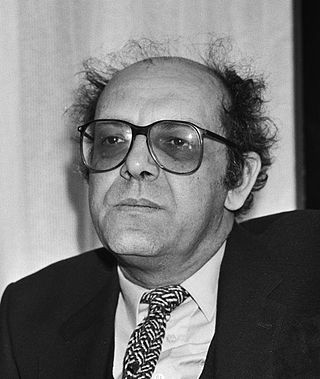
Misha Mengelberg was a Dutch jazz pianist and composer. A prominent figure in post-WWII European Jazz,Mengelberg is known for his forays into free improvisation,for bringing humor into his music,and as a leading interpreter of songs by fellow pianists Thelonious Monk and Herbie Nichols.
Johnny Mbizo Dyani was a South African jazz double bassist,vocalist and pianist,who,in addition to being a key member of The Blue Notes,played with such international musicians as Don Cherry,Steve Lacy,David Murray,Finnish guitar player Jukka Syrenius,Pierre Dørge,Peter Brötzmann,Mal Waldron,fellow South African Dollar Brand,and Leo Smith,among many other prominent players.
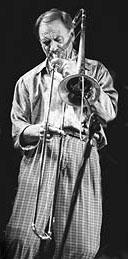
Albert Mangelsdorff was a German jazz trombonist. Working mainly in free jazz,he was an innovator in multiphonics.

Machine Gun is the second album by German avant-garde jazz saxophonist Peter Brötzmann,originally released on his BRÖlabel in 1968.
Harold Simon Miller was a South African jazz double bassist,who lived for most of his adulthood in England.

Willem Breuker was a Dutch bandleader,composer,arranger,saxophonist,and clarinetist.
Dutch jazz refers to the jazz music of the Netherlands. The Dutch traditionally have a vibrant jazz scene as shown by the North Sea Jazz Festival as well as other venues.
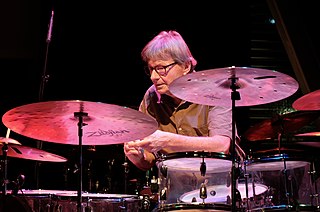
Pierre Courbois is a Dutch jazz drummer,bandleader,and composer.

Buschi Niebergall was a German free jazz musician. His given name was Hans-Helmut,and late in life,his friends called him Johannes.
The VPRO/Boy Edgar Award,is an annual award given to a Dutch jazz musician,composer,or bandleader. The individual must have made significant contributions to the Dutch jazz scene over a significant period of time. The award is a sculpture by Dutch fine artist Jan Wolkers,and a cash prize of 12,500 euros. It is widely regarded as the Netherlands' most prestigious and honorable jazz award. The award is given under the auspicies of the VPRO and Music Center the Netherlands.

Nipples is a 1969 album by free jazz saxophonist Peter Brötzmann,originally released on the Calig record label. The title track is performed by a sextet comprising Brötzmann,Evan Parker,Derek Bailey (guitar),Fred Van Hove (piano),Han Bennink (drums),and Buschi Niebergall (bass). The other track featured,"Tell a Green Man",is performed by a quartet made up of Brötzmann,Van Hove,Niebergall,and Bennink.
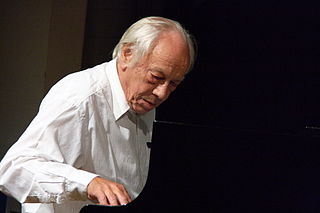
Fred Van Hove was a Belgian jazz musician and a pioneer of European free jazz. He was a pianist,accordionist,church organist,and carillonist,an improviser and a composer. In the 1960s and 1970s he performed with saxophonist Peter Brötzmann and drummer Han Bennink.
Instant Composers Pool (ICP) is an independent Dutch jazz and improvised music label and orchestra. Founded in 1967,the label takes its name from the notion that improvisation is "instant composition". The ICP label has published more than 50 releases to date,with most of its releases featuring the ICP Orchestra and its members.
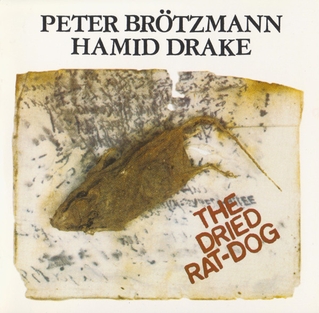
The Dried Rat–Dog is an album by saxophonist Peter Brötzmann and drummer Hamid Drake. It was recorded in May 1994 at Sparrow Sound Design in Chicago,and was released in 1995 by Okka Disk.
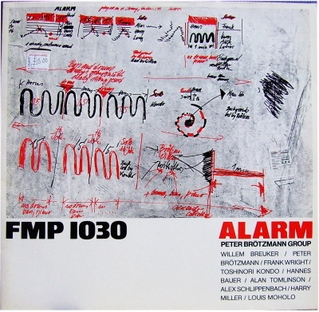
Alarm is a live album by saxophonist Peter Brötzmann. It was recorded on November 12,1981,at NDR Studio 10 in Hamburg,Germany,during the 164th NDR-Jazzworkshop,and was released in 1983 by FMP/Free Music Production. On the album,Brötzmann is joined by saxophonists Willem Breuker and Frank Wright,trumpeter Toshinori Kondo,trombonists Hannes Bauer and Alan Tomlinson,pianist Alexander von Schlippenbach,bassist Harry Miller,and drummer Louis Moholo. In 2006,the album was reissued on CD by Atavistic Records as part of their Unheard Music Series.
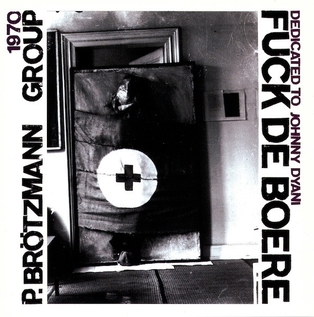
Fuck de Boere:Dedicated to Johnny Dyani is a live album by saxophonist Peter Brötzmann containing two tracks recorded at the Frankfurt Jazz Festival in Frankfurt,Germany. Track one,"Machine Gun," was recorded on March 24,1968,several months before the studio recording that resulted in the album of the same name,and features Brötzmann with saxophonists Willem Breuker,Gerd Dudek,and Evan Parker,pianist Fred Van Hove,bassists Buschi Niebergall and Peter Kowald,and drummers Han Bennink and Sven-Åke Johansson. On track two,the title track,recorded on March 22,1970,Brötzmann is joined by Breuker and Parker on saxophone,Niebergall,Malcolm Griffiths,Paul Rutherford,and Willem Van Manen on trombone,Van Hove on piano and organ,Derek Bailey on guitar,and Bennink on drums. The album was released in 2001 by Atavistic Records as part of their Unheard Music Series. The album is dedicated to South African bassist Johnny Dyani,who,according to Brötzmann,frequently shouted "Fuck de boere!" when discussing life under apartheid.

The Bishop's Move is a live album that combines two trios,one led by saxophonist Evan Parker,and the other led by saxophonist Peter Brötzmann. It was recorded on May 19,2003,at the Festival International de Musique Actuelle de Victoriaville in Quebec,Canada,and was released in 2004 by Les Disques Victo. Parker is accompanied by pianist Alexander von Schlippenbach and drummer Paul Lytton,while Brötzmann is joined by bassist William Parker and drummer Hamid Drake.
References
- 1 2 3 4 5 van Eyle, Wim, ed. (1978). Jazz & Geimproviseerde Muziek in Nederland (in Dutch). Het Spectrum.
- 1 2 3 4 5 "Kees Hazevoet". Paris Transatlantic Magazine (Interview). Interviewed by Clifford Allen. 2009. Retrieved 15 October 2014.
- 1 2 3 4 5 6 Allen, Clifford (August 2010). "Kees Hazevoet: Holland's Uncommon Observer". All About Jazz New York. (republished on Allen's blog, Ni Kantu)
- 1 2 3 4 "Kees Hazevoet". Muziek Encyclopedie (in Dutch). Retrieved 15 October 2014.
- 1 2 3 4 "Kees Hazevoet: Pleasure". Kwadratuur (in Dutch). 5 July 2005. Retrieved 15 October 2014.
- 1 2 Henkin, Andrey (25 July 2004). "Keez Hazevoet: Pleasure (2004)". All About Jazz . Retrieved 15 October 2014.
- ↑ "Where to watch Pelagic Birds – Senegal and the Cape Verde Islands". Oceanic Wanderers. Retrieved 15 October 2014.